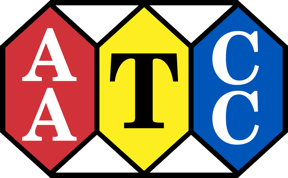Description
Untitled
TEST METHODS ARE DELIVERED AS A LINK IN YOUR EMAILED RECEIPT.
AATCC TM147-2011 (2016e), Test Method for Antibacterial Activity of Textile Materials: Parallel Streak
Developed in 1976 by AATCC Committee RA31; reaffirmed 1977, 1982, 1998, 2016; editorially revised 1980, 1982, 1983, 1986, 2010, 2019 (with title change); revised 1987, 1988 (with title change), 1993, 2011; editorially revised and reaffirmed 2004.
Foreword
The Parallel Streak Method has filled a need for a relatively quick and easily executed qualitative method to determine antibacterial activity of diffusible antimicrobial agents on treated textile materials.
AATCC Method 100, Antibacterial finishes on Textile Materials, Assessment of, is a quantitative procedure which is adequately sensitive but is cumbersome and time consuming for routine quality control and screening tests. Therefore, when the intent is to demonstrate bacteriostatic activity by the diffusion of the antibacterial agent through agar, AATCC TM147 fulfills this need. In the Parallel Streak Method, the agar surface is inoculated making it easier to distinguish between the test organism and contaminant organisms which may be present on the unsterilized specimen. The Parallel Streak Method has proven effective over a number of years of use in providing evidence of antibacterial activity against both Gram positive and Gram negative bacteria.
1. Purpose and Scope
1.1 The objective is to detect bacteriostatic activity on textile materials. The results of using this procedure have demonstrated by Committee RA31 to be reproducible by various laboratories working with materials containing residual amounts of antibacterial agents (as determined by chemical assay) after multiple standard washings. The method is useful for obtaining a rough estimate of activity in that the growth of the inoculum organism decreases from one end of each streak to the other and from one streak to the next resulting in increasing degrees of sensitivity. The size of the zone of inhibition and the narrowing of the streaks caused by the presence of the antibacterial agent permit an estimate of the residual antibacterial activity after multiple washings.
Copyright American Association of Textile Chemists and Colorists, RTP, NC, USA. All rights reserved.
The above information is only a summary of the AATCC test method.
English
Spanish
Hindi
Chinese (Simplified)
Chinese (Traditional)
Japanese
Bengali
Korean
Telugu
Marathi
Punjabi
French
Polish
Arabic
Danish
Dutch
Persian
Portuguese
Latin
Vietnamese
Hebrew
Hungarian
Indonesian
Irish
Italian
Kannada
Mongolian
Romanian
Russian
Norwegian
Serbian
Sindhi
Swedish
Tamil
Turkish
Ukrainian
Urdu
